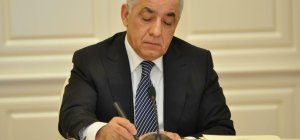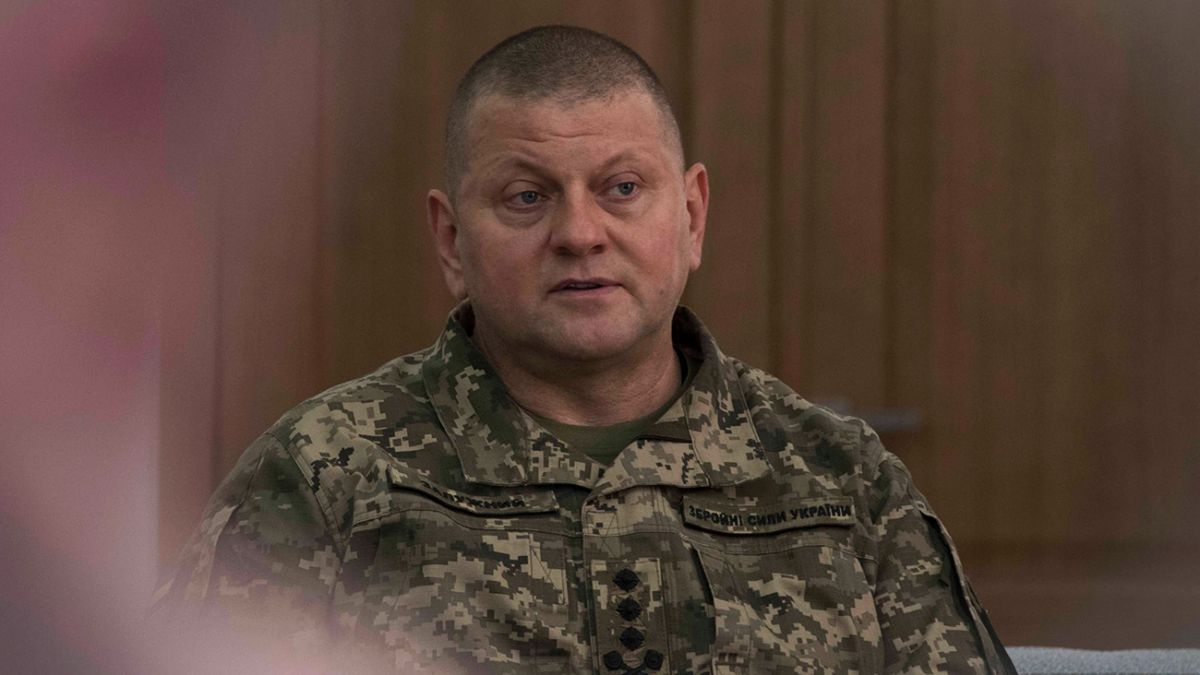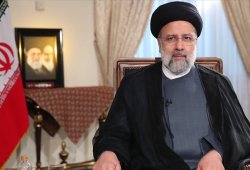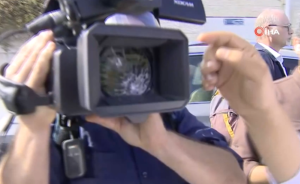General Valery Zaluzhny was removed Thursday as commander-in-chief of Ukraine's military by President Volodymyr Zelenskyy, ending months of growing tensions between the two leaders.
Although the general is one of the most trusted people in Ukraine, thanks to his key role in blunting the initial Russian attack almost two years ago and is seen as a potential political rival to Zelenskyy, there was a lot less patience with him in parts of the Ukrainian military. He also had his tensions with Washington, after he and U.S. military leaders differed over how to conduct last year’s counteroffensive.
Zelenskyy reportedly informed the White House he intended to remove Zaluzhny; the U.S. said it would leave that decision up to Kyiv.
Advertisement
Advertisement
"We've been clear, we're just not going to get embroiled in that particular decision. We have indicated that directly to the Ukrainian president,” National Security Adviser Jake Sullivan said this week.
For months before Thursday' firing, sharp disagreements over the state of the war between the president and his top general had been spilling into public view, reflecting the heightened tension in Kyiv over staggering manpower losses, the failure of last year’s counteroffensive and dwindling supplies of weapons and ammunition.
A senior Ukrainian military officer, who like others in this story was granted anonymity to speak frankly, said there had been frustration building among the upper ranks of the military that Zaluzhny spends “a lot of time on Facebook showing off how he is doing something,” while little changes tactically or strategically along the front lines.
Before the removal was announced, Zaluzhny’s office was asked if the Pentagon had expressed dissatisfaction with how he conducted the counteroffensive, and if those concerns were also shared by some in the Ukrainian military. His spokesperson responded they were unaware of that.
Wartime success
There is no getting around Zaluzhny’s critical role in the early days of the war. He scrambled to move under-equipped units around the battlefield to blunt the massive Russian assault toward Kyiv, and held Moscow’s forces off long enough for Western help to begin to arrive. He then led Ukrainian forces to a stunning counteroffensive in late 2022 that retook large swaths of territory.
He also built a solid relationship with U.S. Defense Secretary Lloyd Austin and other senior Western generals, which was crucial in cementing a flood of military support in 2022 and 2023.
Advertisement
“The army has fought amazingly under Zaluzhny but he has been poorly supported by the government and parliament,” said Glen Grant, a former British officer and a military expert with the Riga-based Baltic Security Foundation, pointing to tensions over a stalled mobilization law that Zaluzhny wants to boost troop numbers but which is politically dangerous.
Zaluzhny has also come under fire for not completing the Ukrainian military's transformation into a Western-style force, not improving logistics and failing to rotate troops away from the frontline to allow them to rest and recuperate rather than leaving them in trenches for the whole war, said Austrian military analyst Tom Cooper.
"After two years since the all-out invasion, none of these is working really well, and improvements observed so far remain relatively minimal," he said.
Grant did point to some management issues, although it’s not certain who bears the blame.
"Some of the weakest generals have been kept and better ones left idle. It is not clear whose fault this is," he said, but then added: "Zaluzhny is the best motivator. What he misses in skills and management knowledge he makes up for in character."
But that was not enough to keep the general in the president’s good graces.
Advertisement
Relations between Zelenskyy and Zaluzhny had been tense for months over the disappointing 2023 counteroffensive. It was launched in the summer — months after some at the Pentagon and elsewhere thought it should have begun.
Some U.S. and Western advisers recommended larger, more tightly targeted assaults on specific positions which would thrust Ukrainian mass against weaker sections of the well-entrenched Russian lines.
Once the fight started, fresh Ukrainian units, trained by Western militaries but without combat experience, struggled in the brutal assaults that ran headlong into Russian defenses. After months of fighting, Ukraine only managed to claw back several miles of territory, at a huge cost in lives and equipment.
Domestic politics
That left Zaluzhny open to attacks.
"This was not the way to do it. It was impossible, but the position of the commander in chief was a bit arrogant: ‘Let's start a brawl, and then we'll see,'" the U.S. military official said.
There was also tension between Zaluzhny and the Pentagon over how the counteroffensive was to be waged.
Advertisement
The Pentagon pushed for the Ukrainian military to make a major thrust focused on one area where planners thought a breakthrough was possible. Instead, Kyiv chose several assaults across the front in the belief that would make it difficult for the Russians to reinforce many points at once.
After weeks of disagreements, “it became pretty clear over the course of the offensive that Ukrainians just weren't interested in U.S. advice, and they generally concluded that we have nothing to offer them advice-wise,” said one person who has advised the White House on military matters.
The argument, the adviser said, was that the United States didn’t have experience fighting the kind of war the Ukrainians were fighting, and while U.S. advice was welcomed, it could also be tone-deaf.
While blame for those disagreements fell squarely on Zaluzhny’s shoulders, he was also “hamstrung by Zelenskyy,” who had the final say on military matters, “and so the U.S. kept yelling at the wrong person,” the adviser said.
In the coming months, as Ukraine is now forced on the defensive, the current “war of attrition is a very, very bad choice for Ukraine,” the Ukrainian officer said.
Rather, Ukraine should adopt an “asymmetric” approach, the officer said, that focuses on defense and industrial targets inside Russia “to break them, instead of this meat grinder” — something that in the long run favors Russia and its larger population and deeper stocks of equipment and armor.
Advertisement
In November, Zaluzhny told the Economist that the war had settled into a stalemate, drawing a sharp rebuke from Zelenskyy and his advisers.
Zaluzhny’s essay forced Zelenskyy to scramble to reassure partners the war hadn’t hit a dead end.
There was also irritation that Zaluzhny’s “entourage openly and publicly discusses Zaluzhny's presidential prospects,” said Volodymyr Fesenko, head analyst of the Kyiv-based Penta Center of Political Research.
“This is not a power struggle,” he added. “But if he does not fire Zaluzhny, after a certain time a dual power will begin to emerge. And this is already unacceptable and will be a challenge for Zelenskyy. There are challenges for him, political risks,” but given the stakes, the two “cannot coexist.”
Just days after reports this month that the general was called into Zelenskyy’s office to be informed that he would be relieved of his duties, Zaluzhny published an op-ed with CNN in which he said his troops must receive new forms of training and new weapons to fully take advantage of their slight lead in fielding new, lethal drone capabilities.
Foreign worries
The political infighting in Kyiv isn’t helping end the political stalemate in Washington, where Congressional Republicans are blocking a financial package with crucial aid for Ukraine as its troops run into ammunition shortages that make it difficult to hold back waves of Russian attackers.
Advertisement
It’s also being celebrated in Moscow. Kremlin spokesperson Dmitry Peskov noted that the reports of Zaluzhny’s dismissal show “things are not going well” in Kyiv.
Mykola Bielieskov, a senior military analyst with the Come Back Alive Charity Foundation, which helps the Ukrainian army with supplies, said that “no matter how events develop in terms of the top management shuffle, the key challenge for Ukraine remains unchanged — it is the development and implementation of a high-quality military strategy in 2024.”
Given the current Russian manpower and materiel advantages and the continued lack of U.S. support, the U.S. adviser said there is real risk this year that Russia will continue its relentless offensives, grinding down Ukrainian forces until Kyiv could “be forced to negotiate from an increasingly disadvantageous position.”
Oxu24.com









































ŞƏRHLƏR